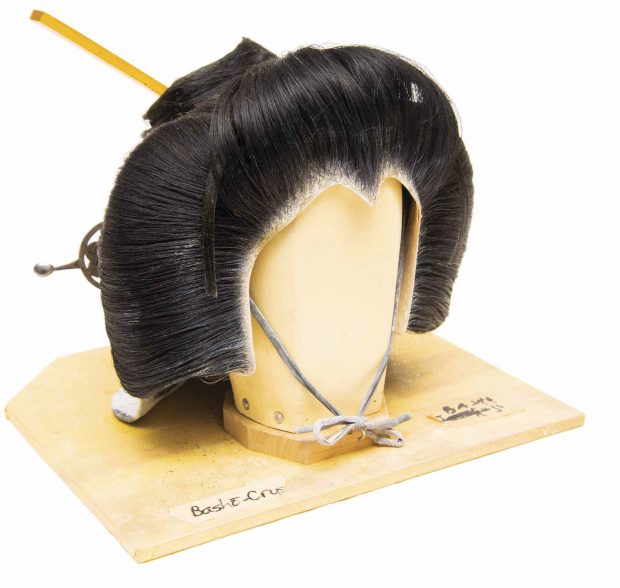 In the early 1960s, the late Professor Leonard Pronko discovered the Japanese art of kabuki while studying theatre in Asia on a Guggenheim Fellowship. He then made history in 1970 as the first non-Japanese person ever accepted to study kabuki at the National Theatre of Japan. Bringing his fascination back to Pomona College, he directed more than 40 kabuki-related productions over the years, ranging from classic plays to original creations. The wig pictured here is one of several that remain from those productions. Below are a few facts about that intriguing Pomona artifact. (For more about Professor Pronko’s life, see In Memoriam.)
In the early 1960s, the late Professor Leonard Pronko discovered the Japanese art of kabuki while studying theatre in Asia on a Guggenheim Fellowship. He then made history in 1970 as the first non-Japanese person ever accepted to study kabuki at the National Theatre of Japan. Bringing his fascination back to Pomona College, he directed more than 40 kabuki-related productions over the years, ranging from classic plays to original creations. The wig pictured here is one of several that remain from those productions. Below are a few facts about that intriguing Pomona artifact. (For more about Professor Pronko’s life, see In Memoriam.)
Fact 1: One of about 20 wigs kept by Pomona’s Department of Theatre and Dance in its restricted costume storage area, this geisha-style wig is part of a collection of props and costumes obtained by Pronko from Japan for his classic kabuki and kabuki-inspired theatre productions.
Fact 2: Like all wigs for female characters, it was intended to be worn by an onnagata, a male kabuki actor who performed in women’s roles.
Fact 3: Other kabuki-related items in theatre storage include swords, wigs, costumes and costume accessories.
Fact 4: Today, the costume storage area holds more than 200 period garments and 300 pieces of jewelry.
Fact 5: Most such wigs are made of either human or horse hair and styled with lacquer.
Fact 6: The origins of the Japanese word “kabuki” are simple and elegant: “Ka” means song; “bu” means dance; and “ki” means skill.
Fact 7: Pronko wrote extensively about the art of kabuki, which he said attracted him because it was so “wildly theatrical.”
Fact 8: Pronko also taught the stylized movement and vocal techniques of kabuki to generations of Pomona College students.
Fact 9: He directed a number of classic kabuki plays, including Narukami Thundergod, Ibaraki and Gohiki Kanjincho.
Fact 10: He also staged kabuki versions of such Western classics as Macbeth.
Fact 11: One of his most original productions was a “kabuki western” titled Revenge at Spider Mountain, based on his love of Native American folklore and inspired by two classic plays: Yoshitsune and the Thousand Cherry Trees and The Monster Spider.
